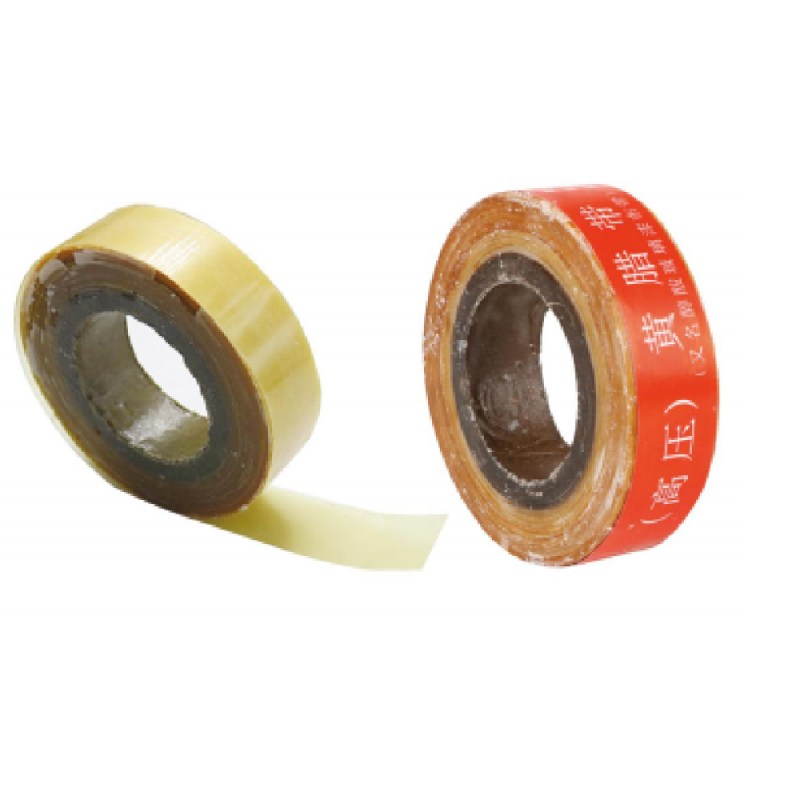Understanding Self-Amalgamating Tape Features, Applications, and Benefits
Self-amalgamating tape, also known as self-fusing tape or amalgamating tape, is a specialized type of adhesive tape that bonds to itself upon application, creating a waterproof and airtight seal. Unlike traditional adhesive tapes that stick to surfaces using an adhesive layer, self-amalgamating tape relies on a unique back-to-back bonding mechanism, where the tape layers fuse together when stretched and pressed. This distinctive quality sets it apart and makes it an invaluable tool in various industries.
Composition and Properties
The primary material used in self-amalgamating tape is usually a form of rubber or silicone. These materials provide inherent flexibility and durability, allowing the tape to stretch upon application. The lack of a sticky adhesive layer means that according to environmental conditions—such as exposure to heat, moisture, and chemicals—the tape can maintain its integrity without degrading. This makes it particularly advantageous for use in demanding environments.
Applications
Self-amalgamating tape is incredibly versatile and has a wide range of applications across different sectors
1. Electrical Insulation One of the most common uses is in the electrical industry, where it is employed for insulating electrical connections. Its excellent dielectric properties ensure that it can withstand high voltage and protect sensitive components from moisture and dust.
2. Plumbing and Pipe Repairs This tape is ideal for temporary or permanent repairs on pipes, hoses, and tubing. It can seal leaks effectively, reinforcing the integrity of joints while also providing a protective layer against corrosion.
self amalgamating tape

3. Automotive and Aerospace In the automotive and aerospace industries, self-amalgamating tape is used for bundling wires, protecting electrical connections, and insulating components from environmental damage.
4. Marine Applications With its water-resistant properties, the tape is commonly employed in marine environments for electrical installations, repairs, and even securing components against saltwater corrosion.
5. DIY and Home Repairs Beyond industrial applications, self-amalgamating tape is a useful tool in home improvement projects. Homeowners often utilize it for various repair tasks, from fixing garden hoses to sealing electrical connections, making it a staple in toolbox essentials.
Benefits
The benefits of self-amalgamating tape are numerous. Its ability to create a seamless, watertight seal makes it highly effective for preventing leaks. The absence of adhesive means that it can be applied without worrying about residue or damage to the underlying surfaces. Moreover, it can stretch to accommodate various shapes and sizes, allowing for effective bonding in tight or awkward spaces.
The ease of application is another significant advantage. Unlike traditional tapes that require precise placement, self-amalgamating tape can be wrapped around a surface without the need for careful alignment, allowing for quick fixes. Additionally, most self-amalgamating tapes can withstand a broad temperature range and offer resistance to chemicals, UV light, and physical wear.
Conclusion
Self-amalgamating tape is an exceptional product that combines versatility with effectiveness. Whether used in professional industries or for DIY home repairs, its unique properties make it an indispensable tool. As technology progresses, developments in material science could enhance its applications and functionality even further, solidifying its role in the world of repair and insulation. For anyone seeking reliable and efficient sealing solutions, self-amalgamating tape is undoubtedly worth considering.
-
XIANGFAN Rubber Tape-Ultimate Solutions for All Your Insulation NeedsNewsJun.24,2025
-
XIANGFAN Rubber Tape-Protection for Industrial and Residential ApplicationsNewsJun.24,2025
-
XIANGFAN Rubber Tape: Superior Safety and Sealing for Demanding EnvironmentsNewsJun.24,2025
-
XIANGFAN Rubber Tape: Reliable Solutions for Every Electrical ChallengeNewsJun.24,2025
-
XIANGFAN Electrical & Industrial Tape: Powering Reliability Across IndustriesNewsJun.24,2025
-
XIANGFAN Electrical & Industrial Tape: Excellence in Every ApplicationNewsJun.24,2025
